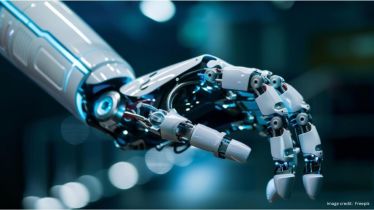As businesses hop onto automation, a conundrum is believed to have arisen around the impact of collaborative robots (cobots) in cyberspace. Cobots, which rely on information technology (IT) infrastructure to create a collaborative working environment with humans, can be vulnerable to cybersecurity threats. These threats pose risks, ranging from data breaches to physical harm and damage to products. It is believed that there is no fixed solution for safeguarding the system where cobots are involved. “Furthermore, the solution may come in various forms that could be in the form of network, software or hybrid solution. The same is applicable for the human-robot system, and hence, the research is deep diving more in this regard to minimise the infection of these collaborative robots form the malicious code injection and port sniffing of the network sued by these robots,” Parma Nand, pro vice-chancellor, Sharda University, told FE TransformX.
Cobots in cyberspace
As per insights from Next Move Strategy Consulting, a consulting group, the global cobot market is projected to grow from 2020 to 2030 at a compound annual growth rate (CAGR) of almost 12%. While sized at $590.5 million in 2020 , the market is projected to reach the size of almost two billion dollars in 2026, as per insights from Statista, a market research firm. While cobots offer increased efficiency, improved safety, and human-machine collaboration, their interconnected nature has potential to necessitate security measures to mitigate potential risks. “These measures have a multifaceted impact, not only safeguarding workers and sensitive data in the present but also paving the way for a secure and prosperous future of human-robot collaboration. Implementing strong security protocols, such as access controls and network segmentation, minimises the risk of unauthorised access to cobots,” Rajesh Kumar, robotics and artificial intelligence (AI) architect, Addverb, a robotics company specialised in warehouse automation, said.
Industry experts believe that cobots can come with poor cybersecurity measures and pose a problem to the parts being produced. They could be produced just a millimetre or two off from the required specifications, causing part failure down the line. They could also be forced to stretch beyond their capabilities and break. “Cobots can be at the forefront of automated technologies designed to work alongside human labourers in industrial settings. While cobots offer benefits, their integration into cybersecurity roles can present challenges due to the potential risks associated with their compromise. If a hacker gains control of a cobot, they could manipulate it to perform harmful actions, posing threats to human workers and critical infrastructure,” Rohan Vaidya, area vice-president, India and SAARC, CyberArk, a publicly traded information security company, mentioned.
Coexistence of humans and robots: Boon or Bane
Critics argue that the rise of collaborative robots in modern manufacturing brings about cybersecurity concerns. These sophisticated machines, integrated with advanced sensors and AI, work alongside humans in shared spaces, posing risks that must be addressed. Unauthorised access to sensitive data in cobots can lead to intellectual property theft and operational disruptions, while cyber attackers manipulating cobot programming can cause product and equipment damage and physical harm to workers. “Moreover, disabling safety mechanisms through cyber attacks exposes workers to injury risks. To safeguard human labour in collaborative environments, comprehensive cybersecurity strategies are imperative. This entails regular software updates, encryption methods, and continuous monitoring for swift responses to potential breaches,” Vineet Kumar, global president and founder, CyberPeace, a non-profit organisation of cybersecurity explained.
Experts believe that the firmware, controlling lower-level operations such as sensors and actuators, is often updated over the air, leaving robots vulnerable to penetration through the network or its peripherals. In this digital age, integration with established cybersecurity standards is understood to be crucial. It is believed that ensuring cybersecurity measures in robot manufacturing is imperative in end-to-end solutions, involving multiple robots and peripherals within collaborative environments with humans. “Vulnerabilities arise primarily in the solution software and firmware. The solution software, governing the business logic and application layer, must be secured against external threats, in a warehouse setting robots interface with a warehouse execution systems, making this layer susceptible to cyber attacks,” Pranav Srinivasan, co-founder and director, Accio Robotics, a warehouse automation and robotic system solutions provider, concluded.
